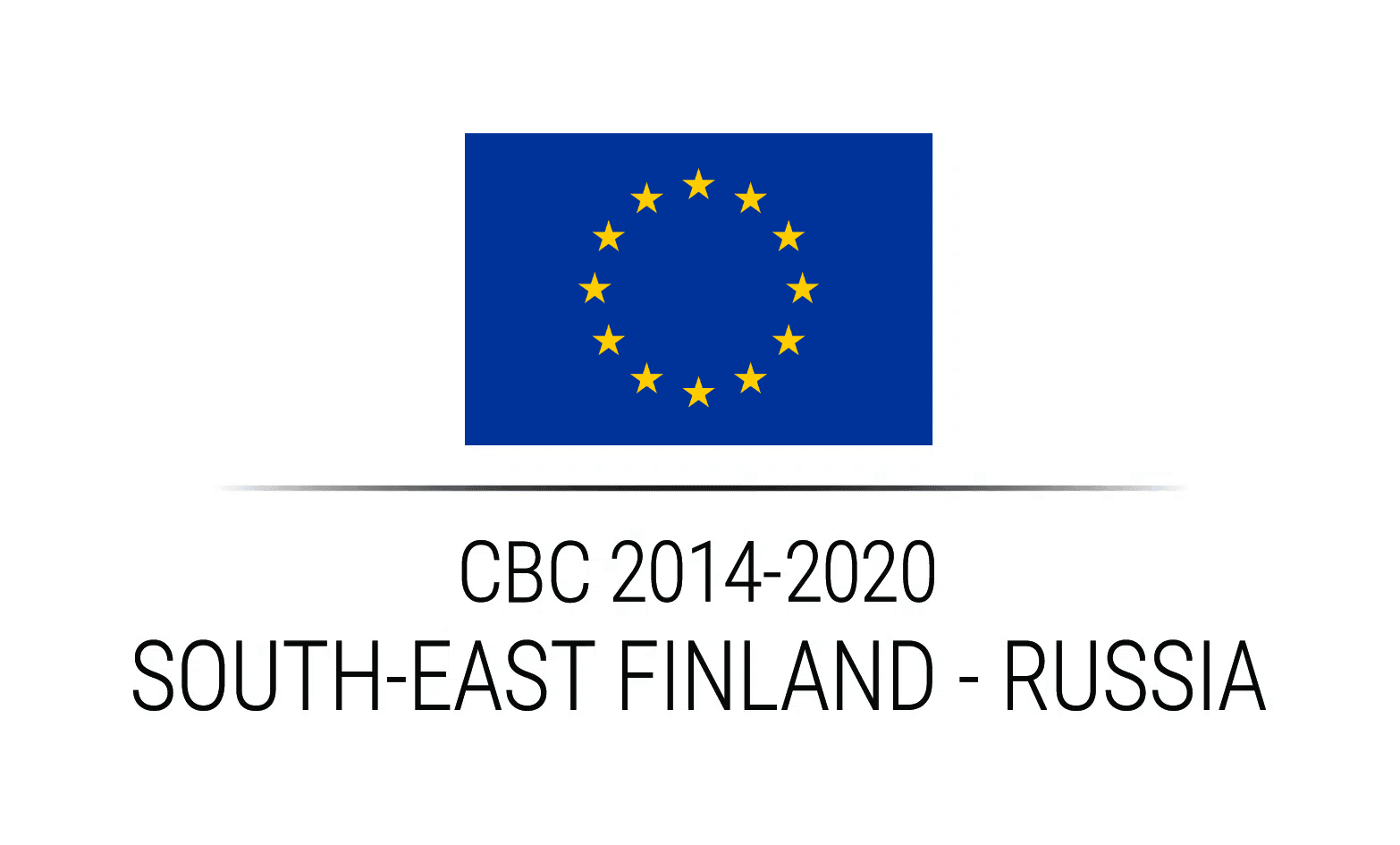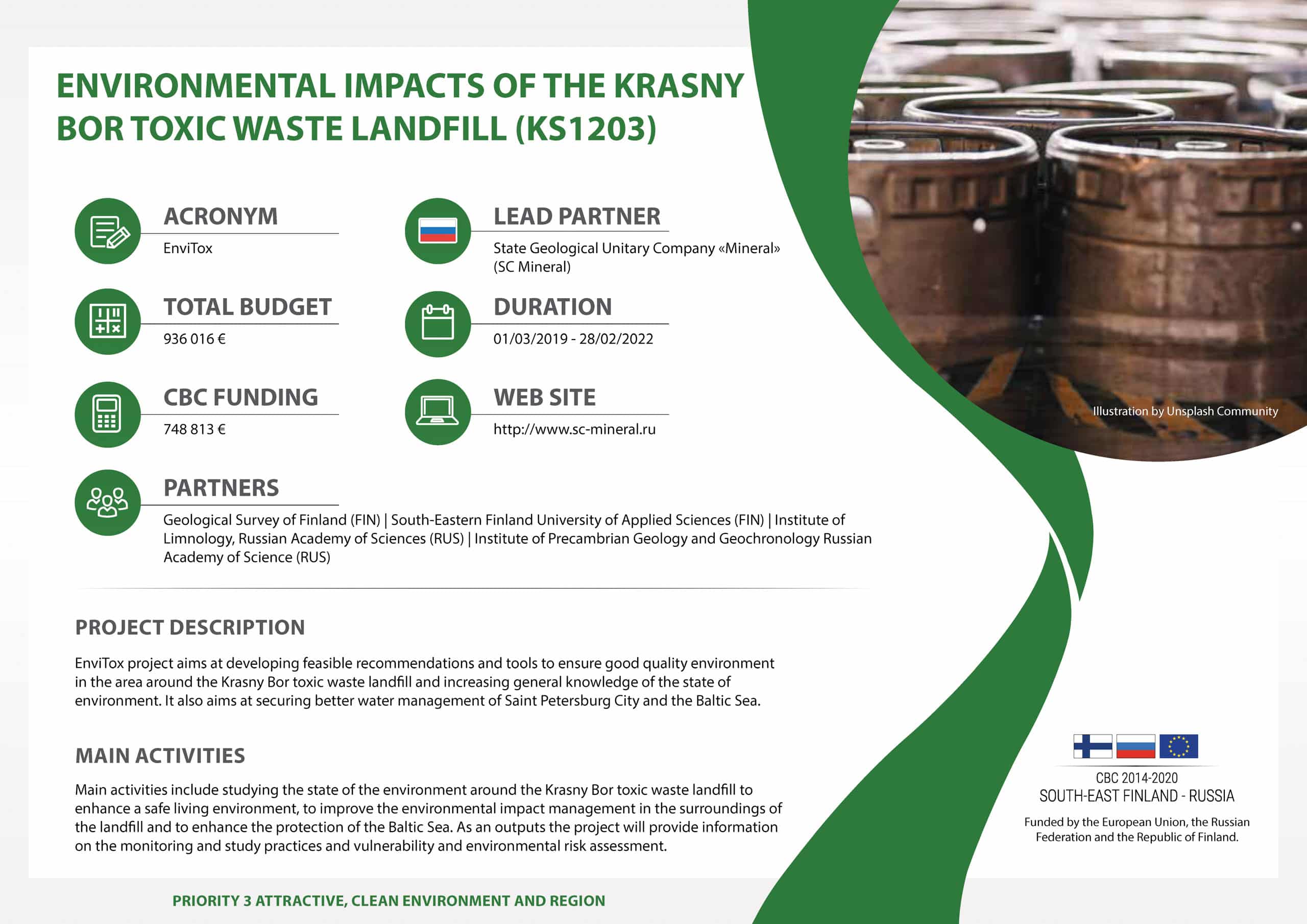The project “Environmental impacts of the Krasny Bor toxic waste landfill – EnviTox” carried out studies in the surroundings of the Krasny Bor landfill to gain an overview of its current environmental status. It introduced risk assessment methods that were applied to estimate the potential risks posed by the hazardous waste landfill to people and the environment near the Krasny Bor area, as well as the potential threat to the water intake of St. Petersburg. The risk assessment was mainly carried out in accordance with Finnish practices. However, the Russian maximum permissible concentrations (MPCs) were used as target values in the risk assessment instead of the Finnish reference values. The fieldwork and sampling were planned to obtain an overview of the environmental status of the hazardous waste landfill surroundings and to collect the information needed for the environmental risk assessment. The samples were taken from surface waters, groundwater, stream sediments and soil. Together with basic chemical parameters and physical characteristics, a wide range of contaminants were analysed from the samples. Ecotoxicological sampling was conducted as well.
In addition, surface water monitoring was established to obtain information about the possible discharge of wastewater from the landfill and other potential sources of pollution entering the river network surrounding the study area, as well as to determine the seasonal variation in the discharge and water quality. The risk assessment was based on the results of the project studies. Initially, conceptual models for the whole study area were established. Furthermore, the likely exposure pathways and risk assessment were defined. The risk was assessed by comparing the results with the Russian MPCs and through calculations of risk quotients, an EPISuite™ model and the bio-met bioavailability tool, as well as modelling with the Risk-Based Corrective Action (RBCA) Tool Kit. In general, transport via stream waters is probably the most important transport route for contaminants from the landfill to the surrounding environment. The highest chemical concentrations and risk quotients in water and sediment, as well as general water quality indicators, were usually detected in the surroundings of the landfill and along the route of the River Izhora, indicating that there is migration from the landfill especially to this direction.
Some pollutants exceed the MPCs in the Rivers Tosna and Izhora as well. In addition, the sum of risk quotients for different contaminants indicates that the contaminants pose a risk in soil throughout the study area. According to the produced flow model, the migration of pollutants to the wider area may take place in case of accidental leakages or overflows. There is a possibility of a severe leakage, especially from the open or temporarily covered hazardous waste pools. The provided recommendations for feasible risk management and mitigation measures, include suggestions for additional studies, environmental monitoring, preparedness plans for emergency situations, measurements for the abandoned landfill areas, and for public communication and awareness raising. The project results support the decision makers, environmental authorities and land use planners responsible for the environmental management of the Krasny Bor surroundings.
View this project in keep.eu


